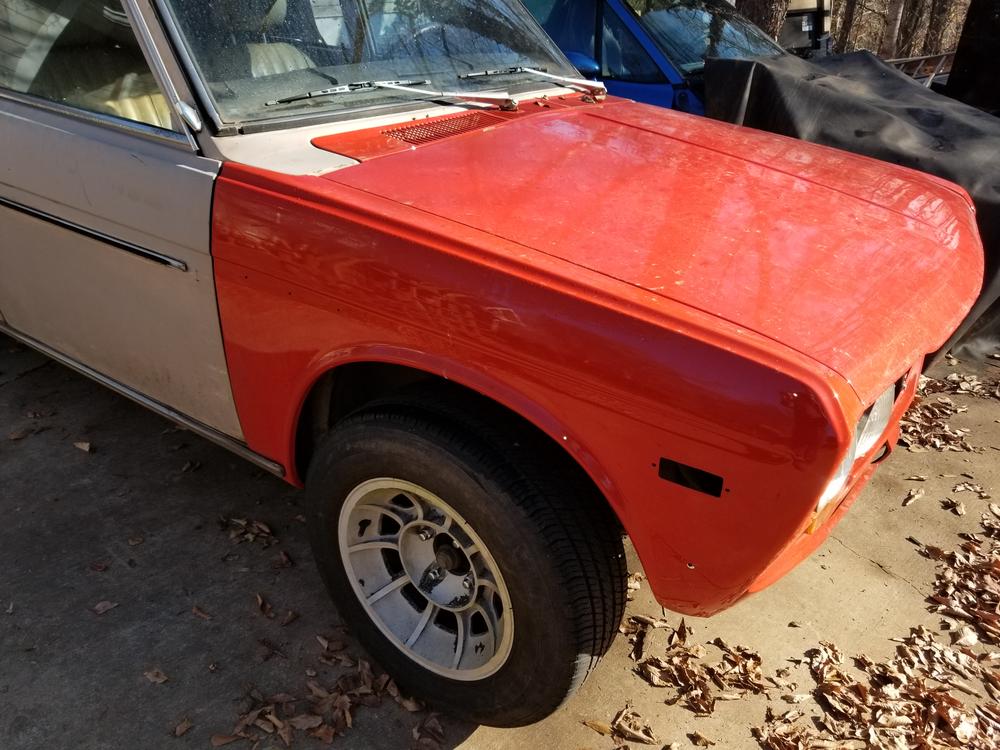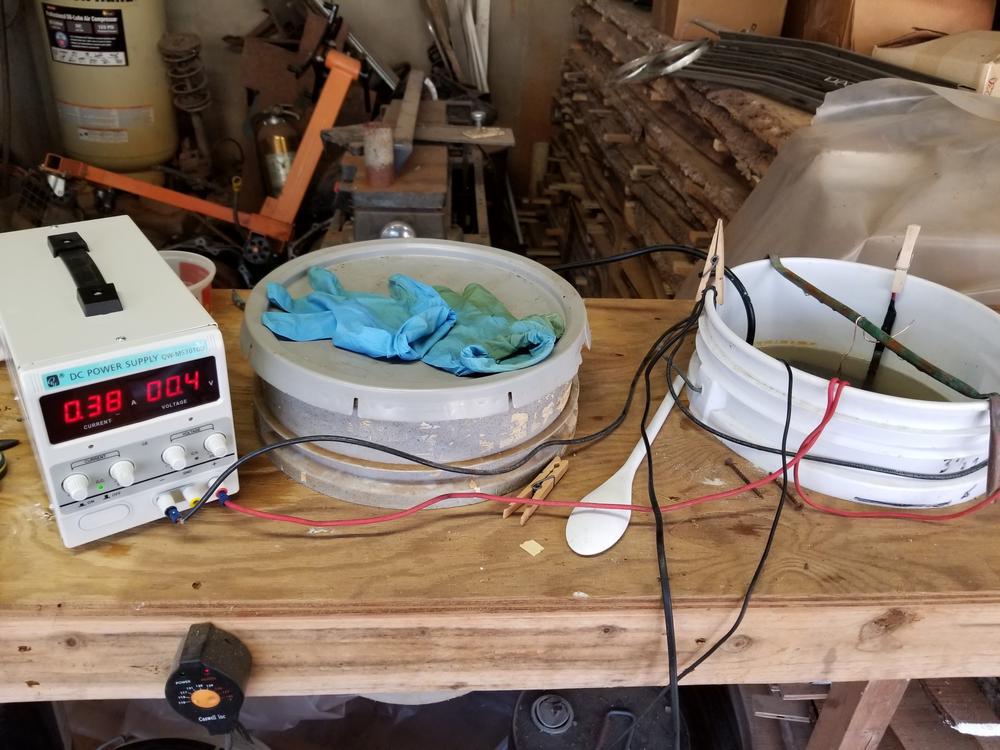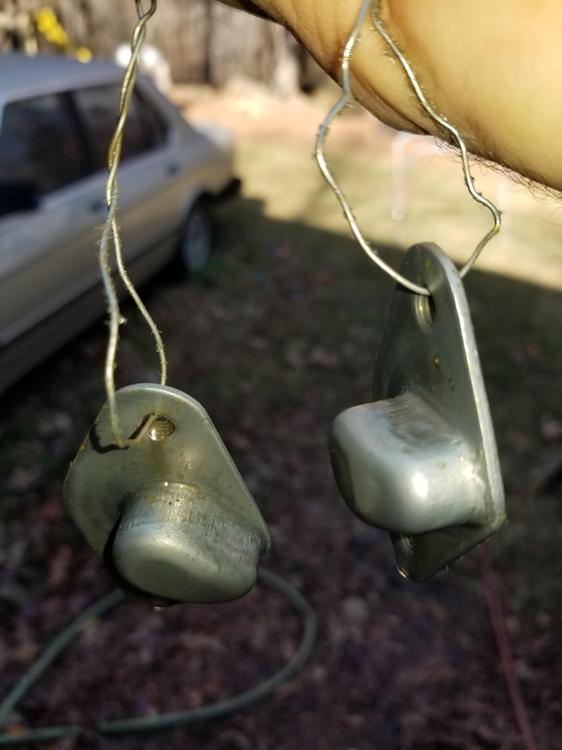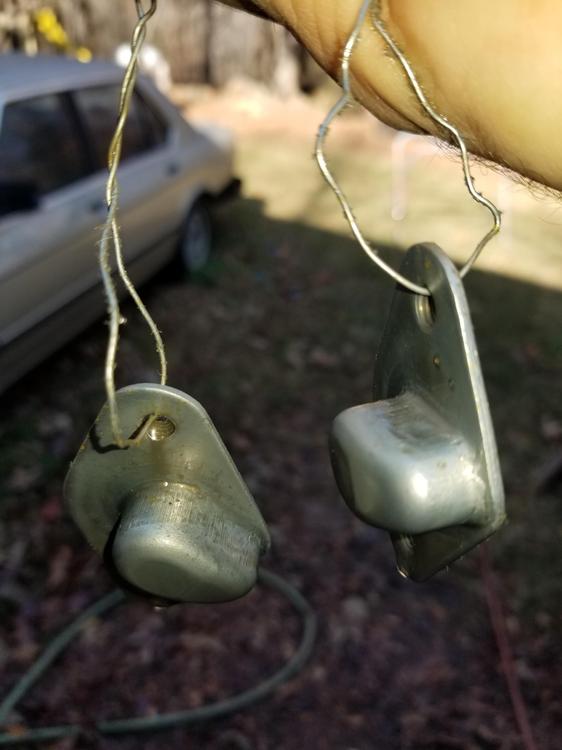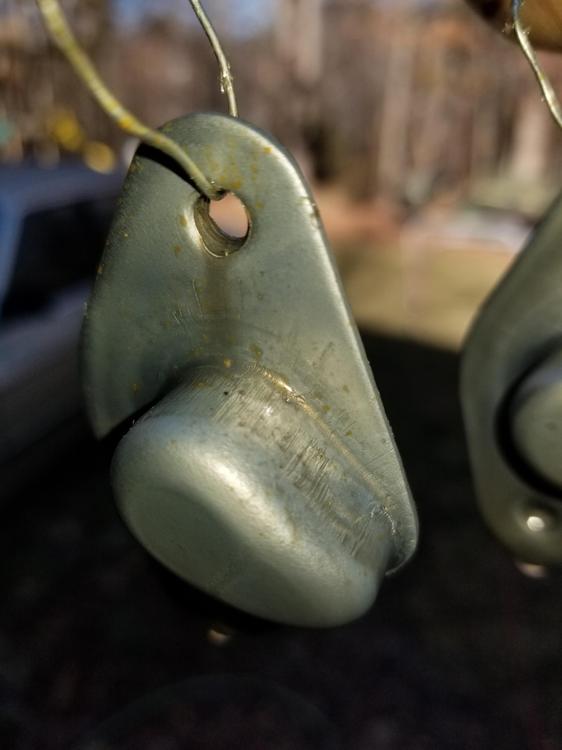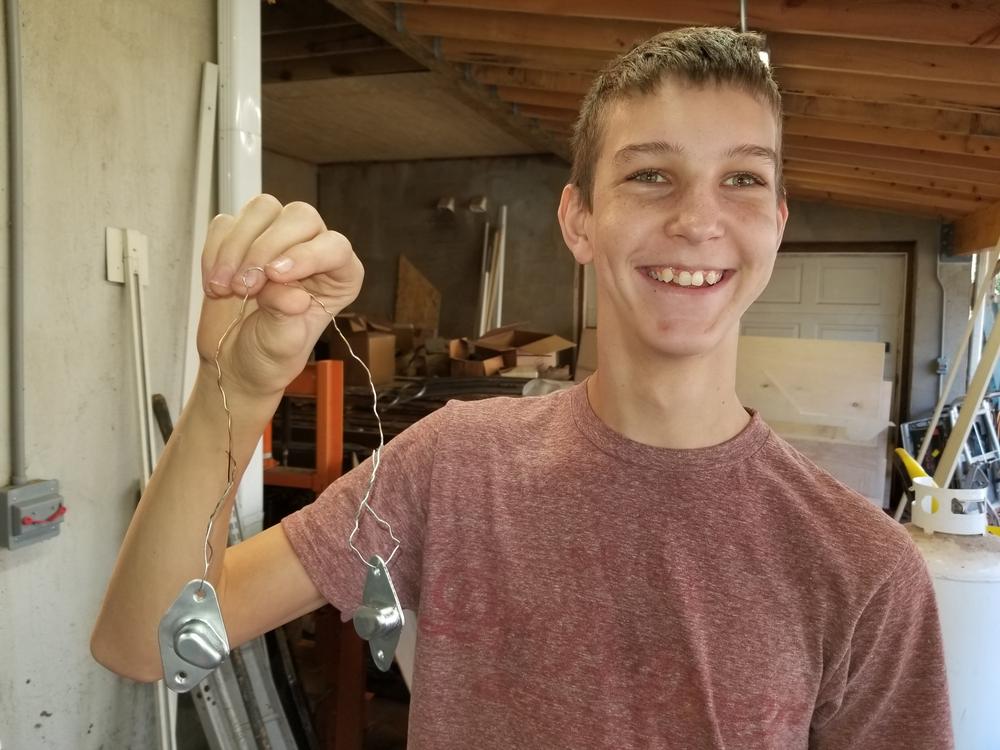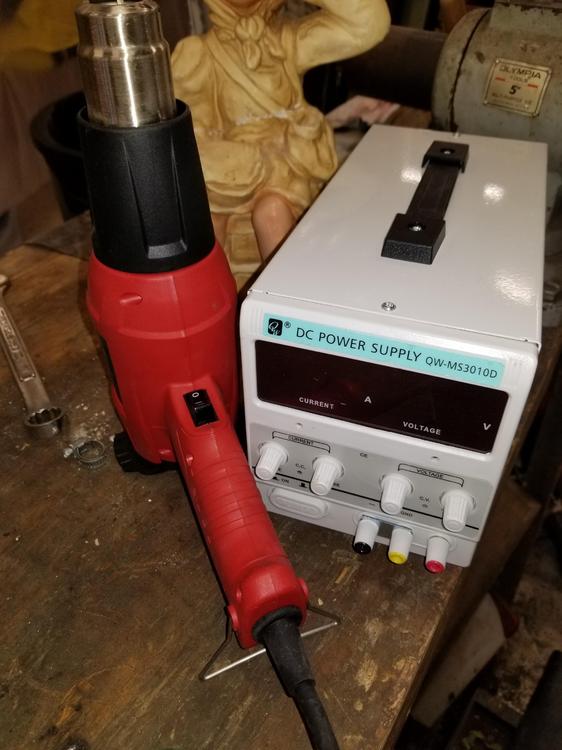I will give this a shot:
I start with the parts, if they are oily or nasty I wash them, you can use purple power, carb cleaner or sometimes I use my parts washer. Get them clean...
If I am worried about residue I might wash them with soapy water or use carb or brake cleaner...
Then I bead blast them in here...until I get clean metal. Bolt threads can be a problem
and I am currently using these beads
https://www.amazon.com/gp/product/B00867RC50/ref=oh_aui_detailpage_o06_s00?ie=UTF8&psc=1
Extra Fine glass beads
Price For: Each Standards: OSHA Size: 53 lb. Item: Blast Media Media Type: Glass Beads Size: 53 lb. US Sieve: 170-325 Nominal Dia. Micron Range: 45 to 90 Nominal
Dia. Range: 0.0017" to 0.0035" Grit: Extra Fine Country of Origin (subject to change): United States
Then your part will look about like this
Then you need to string everything up. I just started using some finer copper wire yesterday and I found it much easier to work with and gives less shadowing on the parts. I stripped some multi-stranded copper wire and I use a few strands or even one sometimes for really small parts and string them up on there. I use heavier wire for larger parts and for making hooks to hang parts. I have 2 strands in my hand...
Then I head to the plating bench
During this time I have been warming up the bench. Cut the crock pot on low if it's warm out. High if it's cold out...
The crock pot is the first step. Running hot SP Degreaser from Caswell. I leave the parts in here on strings until I am ready for them. They can sit in there for a long time. I have even left them for days and they don't rust. If you leave them in water or exposed to the air you can get flash rusting. After this point parts only get handled with gloves until they are dry...
Next over is the power supply. I am running a power supply I bought off Amazon I believe
It's 10 amp so that would give me about 83 inches or so at .12 amps/squ in
The pickle tank sits between the power supply and the plating tank. It is muriatic acid and I have stopped using it for now. If you have parts that have some rust that you really can't get clean then the pickle tank might be necessary but for now I am skipping it and seem to be getting good results. I had concerns the acid was etching the parts and making the parts rough, and sometimes it discolored the parts which effected the final color.
Plating tank is running with a submersible aquarium pump HFreight (be sure when done plating to rinse this pump and blow dry or it will corrode and not run the next time) circulating fluid. 2 Anodes one on either side of the tank. 2 heaters running off a thermostat that keep the tank about 110d F. I am using Caswell plating solution and their Zinc brightener additive
So parts come out strung and go into hot SP degeaser. They wait there until the plating tank is available. I dip them in a rinse bucket, then I hang them on a copper tube I have suspended across the plating tank (this bar has corroded alot during this effort and made connections a problem so I plated it tonight to mitigate that)
I am running parts based on the square inches of surface area. If it's a washer you count both sides. I made an excel spread sheet with some formulas that work a little better than the caswell formulas. It does washers for instance based on id, od and thickness instead of having to calculate the area of a cylinder and subtract the area of a cylinder. I may try to attach it later...
I calculate my amperage at .12 amps per square inch. I was at .14 but I have found a little lower seems to work a little better and the plating times aren't too bad.
When I first put parts into the tank. I will check them within just a few minutes. If the plating is dark. Sort of primer gray then you need brightener. I have found if in doubt, add a little bit. Parts should come out light gray with really light highlight areas. I have even had some parts come out that almost look like they've been chromed...
Also if I am getting some blackish areas your current is too high. I have found though sometimes parts will develope some black on them, almost looks like soot. Looks bad but when they go in the first chromate tank it is gone almost instantly.
I have also found on my last few batches that the correct amperage gives me a voltage of about 0.3V. We will see if that holds true now that the hanging bar has been plated...
Today I ran the current up until it read 0.4V then backed it off a little until a little bit inside the 0.3v range to get good plate. The higher you run your current for a certain size part the higher the voltage will be (that's "Sparky" talk ). I have also found when plating concave parts, sometimes the interior area doesn't want to plate due to the magnetic lines of current. So to get around this I plate at my normal current for a while, maybe 75% of the run time. Then I turn the current down, sometimes to even half of the previous amperage. This seems to help the interior areas plate by reducing the magnetic fields . I normally plate for 20 -30 minutes depending on how big the parts are and how the coverage is coming. The more complex the shape, the more you have to turn it and rehang it or rotate. Plating works by line of sight. So the hanger wires can cause shadowing, other parts can cause it or even hanging in the tank can cause it. So I check parts about every 10 minutes or so to make sure every thing gets covered.
After the plating tank I rinse the parts with a spray bottle filled with distilled water ( all water used in the processes is distilled water!!!) I will probably go to a rinse bucket soon. they should look like this or better
After rinsing them I dip them in Caswell blue chromate. I really don't dip them. I hang them in the solution and swish them around for between 15-60 seconds. They will brighten up alot! The chromate tank needs to be at least 80d F to get quick results. Recently I went to running them with hot water baths to keep them warm and that has really helped. When it's warm outside they sit in holes on the far right side of my plating bench.
When it comes out of the blue chromate they will look like this
They almost look chromed. The are hatch dovetails for Cody's goon. They will stay silver. At this point I rinse them with the spray bottle again and hang them up. I reload the plating tank and when I get a chance I will dry them with the Milwaukee heat gun from the earlier picture. After I dry them good you can handle them. If you don't dry them with heat you need to let them hang overnight to dry or you will damage the finish.
If yellow zinc is required then before drying them and immediately after the blue chromate, I swish them in the yellow chromate for 15 secs exact! I use my phones stop watch. If you aren't consistent your plate color will vary. Find a time period that gives you the color you like based on the concentration of your chromate and stick with it. The blue chromate isn't as sensitive for time because it really doesn't change after it brightens up. After yellow chromate, dry as before...
@grannyknot
How's that? Questions? Any aspect I didn't cover?





 Subscriber
Subscriber


